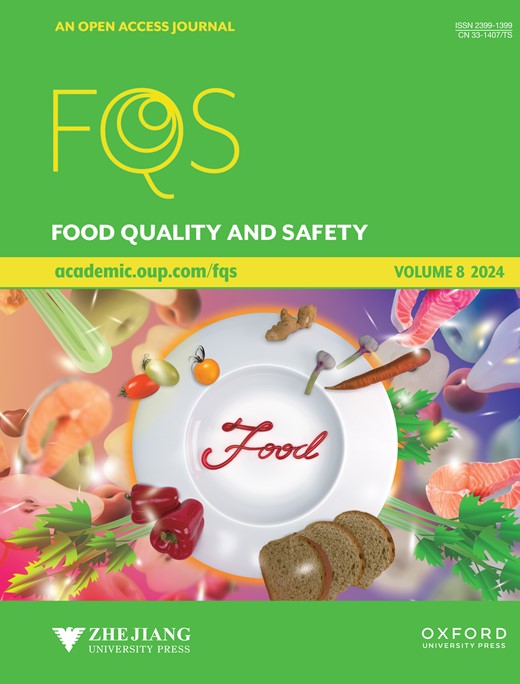纽波特肠炎沙门氏菌对长期高渗压力的耐受性变化和机制
IF 4.4
3区 农林科学
Q2 FOOD SCIENCE & TECHNOLOGY
引用次数: 0
摘要
腌制是一种广泛使用的食品加工技术。然而,腌制过程中的高渗应力会诱导食源性致病菌产生不同程度的抗药性,对食品安全构成潜在威胁。在这项工作中,使用 5%和 10%的 NaCl 溶液(高渗应力)培养了多种新港沙门氏菌(S. Newport)菌株,并使用 Weibull 模型筛选出了最敏感和最耐受的菌株,以研究耐受性差异的机制。随着高渗应激时间的延长,S. Newport 的核酸和蛋白质泄漏量逐渐增加,膜电位也随之下降。与敏感菌株相比,耐受菌株能保持细胞膜的完整性,维持较高的膜电位水平。耐受株的上游基因 proV 和 otsB 的表达水平明显低于敏感株;但耐受株的 Kdp 和 Trk 系统以及下游基因 proX、proW 和 otsA 的表达水平高于敏感株,导致细胞内 K+和曲哈糖的浓度升高,从而能在高渗环境中更好地存活。这项工作的发现为了解病原体在高渗压力下的生存机制提供了宝贵的见解,有助于制定策略,降低腌制食品行业在长期加工和贮藏过程中的微生物风险。本文章由计算机程序翻译,如有差异,请以英文原文为准。
Tolerance variations and mechanisms of Salmonella enterica serovar Newport in response to long-term hypertonic stress
Curing is a widely used food processing technology. However, the hypertonic stress in curing can induce varying degrees of resistance in foodborne pathogens, posing a potential threat to food safety. In this work, various Salmonella enterica serovar Newport (S. Newport) strains were cultured using 5% and 10% NaCl solutions (hypertonic stress), and the most sensitive and tolerant strains were selected using Weibull model to investigate the mechanism underlying the tolerance differences. With hypertonic-stress time prolonging, the leakage of nucleic acids and proteins of S. Newport were increased gradually, and the membrane potential of S. Newport declined after an increase. Compared with the sensitive strain, the tolerant counterpart exhibited the ability to maintain the integrity of cell membrane and sustain a high membrane potential level. The expression levels of upstream genes proV and otsB in the tolerant strain were significantly lower than those in the sensitive strain; but the Kdp and Trk systems and downstream genes proX, proW and otsA much highly expressed in the tolerant strain compared with the sensitive strain, leading to higher concentrations of intracellular K+ and trehalose, enabling better survival in hypertonic environment. The findings of this work offer valuable insights into pathogen survival mechanisms under hypertonic stress and contribute to the development of strategies for mitigating microbiological risks during long-term processing and storge in the cured food industry.
求助全文
通过发布文献求助,成功后即可免费获取论文全文。
去求助
来源期刊

Food Quality and Safety
FOOD SCIENCE & TECHNOLOGY-
CiteScore
7.20
自引率
1.80%
发文量
31
审稿时长
5 weeks
期刊介绍:
Food quality and safety are the main targets of investigation in food production. Therefore, reliable paths to detect, identify, quantify, characterize and monitor quality and safety issues occurring in food are of great interest.
Food Quality and Safety is an open access, international, peer-reviewed journal providing a platform to highlight emerging and innovative science and technology in the agro-food field, publishing up-to-date research in the areas of food quality and safety, food nutrition and human health. It promotes food and health equity which will consequently promote public health and combat diseases.
The journal is an effective channel of communication between food scientists, nutritionists, public health professionals, food producers, food marketers, policy makers, governmental and non-governmental agencies, and others concerned with the food safety, nutrition and public health dimensions.
The journal accepts original research articles, review papers, technical reports, case studies, conference reports, and book reviews articles.
 求助内容:
求助内容: 应助结果提醒方式:
应助结果提醒方式:


